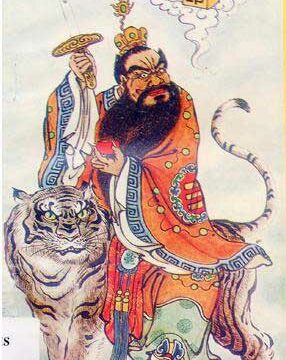It is also known as “Zheng-Yi-Jiao” or “Zheng-Yi-Pai”. Zheng-Yi Taoism was established in the 2nd century, at the time it was called Wu-Dou-Mi Taoism. During Yuan Dynasty, around 13th to 14th century, many different sects of Taoism had merged into Wu-Dou-Mi Taoism, and followed by a change of name to “Zheng-Yi-Jiao” which is still in use today. Since that time, Taoism schools in China were either part of Zheng-Yi Daoism or part of Quan-Zhen Daoism.
The top leader or patriarch of “Wu-Dou-Mi Daoism” is called “Tian-Shi (Celestial Master)”. The 35th generation Tian-Shi was granted special authorities by the Emperor to lead off most of the Taoist organizations in the country, as well as the right to lead the three major schools of incantation and talisman. Later in Yuan Dynasty, the 36th generation Tian-Shi was given the power to lead all Taoist organizations in south China, and the 38th generation Tian-Shi was put in charge of the three major schools of incantation and talisman.
After these series of arrangement, all schools under the category of “incantation and talisman” became a part of Zheng-Yi Taoism. The commonalities of all these different schools under Zheng-Yi-Jiao are: they all take “Zheng-Yi-Jing” as their basic canon, they all practice immortal worshipping, incantation, talisman, and provide exorcism and prayer services.
Zheng-Yi Taoists are not required to live inside Taoist temples, nor are they required to stay celibate.
Written and Translated by Daoist Liu Cheng Yong, German Daoist Association.

